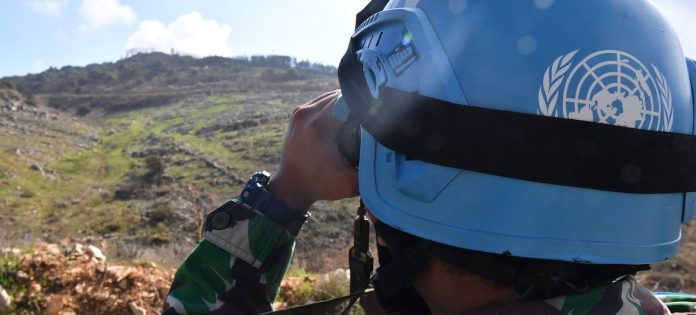According to Catherine Pollard, UN Under-Secretary-General for Management Strategy, Policy and Compliance, the world is currently facing more conflicts than any time since World War Two, which is further exacerbated by the changing nature of conflict. She made these remarks during the two-day meeting held on 4 and 5 February.
Pollard warned of an increase in conflicts both within and between States, driven by factors that transcend borders such as transnational organized crime, natural resource exploitation, non-State armed groups, and terrorism. Technology plays a dual role in conflict, both helping to resolve and worsen it through misinformation and disinformation.
UN Photo/Sylvain Liechti
An unmanned aerial vehicle or drone is prepared for flight in Goma, in the Democratic Republic of the Congo. (file)
‘Blue Helmets’ need 21st-century tools
During the meeting, delegates proposed recommendations to equip UN peacekeepers with the necessary tools to address multiple challenges. These suggestions included the utilization of unmanned aerial vehicles (UAVs) for peacekeepers for situational awareness and self-defence, streamlined decision-making processes, more informal briefings to the Security Council, and enhanced training in urban warfare.
Experts from civilian, military, and police sectors came together at the Peacekeeping Training Centre of the Indonesian Armed Forces to prepare for a ministerial meeting on UN peacekeeping in Germany in May. The aim is to align peacekeeping operations with the vision of the UN Secretary-General to modernize peacekeeping for the 21st century.
Panelists emphasized the need to adapt the UN’s peacekeeping approach to current challenges and adjust the way peacekeeping operations are conducted.
Defensive drones
Colonel Ismael Andrés highlighted the importance of authorizing the use of new technologies, including drones with weapons, for peacekeeping operations. He emphasized the need for Security Council authorization for the use of drones for self-defence due to evolving threats linked to UAVs.
Shamala Kandiah Thompson from Security Council Report suggested that regular briefings to the Security Council on operational mission challenges and available peacekeeping models could facilitate decision-making and enhance peacekeeping effectiveness.
Cost-effective solutions
UN peacekeeping missions leverage unique capabilities developed over years of experience in various operations worldwide. These missions have played critical roles in fostering dialogue, peace agreements, regional stability, civilian protection, and institution-building.
El-Ghassim Wane, the lead author of a study on the future of peacekeeping, highlighted the cost-effectiveness of UN peacekeeping in stopping armed conflicts and maintaining peace, citing examples like Haiti and Sudan.
Sharing ideas and adapting new models
A global forum, co-hosted by Bangladesh, Indonesia, the Netherlands, and the United States, aimed to facilitate discussions among Member States and stakeholders ahead of the ministerial meeting in Germany. The goal was to exchange ideas, propose action plans for adapting new structures and processes, and identify resources and capabilities to ensure that UN peacekeeping remains effective in addressing evolving challenges.




